talkingfashion » collector
-
History of the Watch: A Timeless Timekeeping Accessory
The Watch: A Timeless Timekeeping Accessory
By Paige McKirahan
The neverending passage of time is what that we base all of our daily schedules on; from sleep to work to the next fun party, everything runs on the basis of time. But, what is time without a timekeeping device? Without them, we would never be quite sure if were truly on time, and for chronically late people (like myself), this would create quite a problem. People found this to be increasingly troublesome and started looking for a solution; yes, clocks on the wall tell us all we needed to know, but how would we have this knowledge if we were out and about or a clock wasnt near? This question was answered with the creation of the wristwatch in the early 1800s for the Queen of Naples.
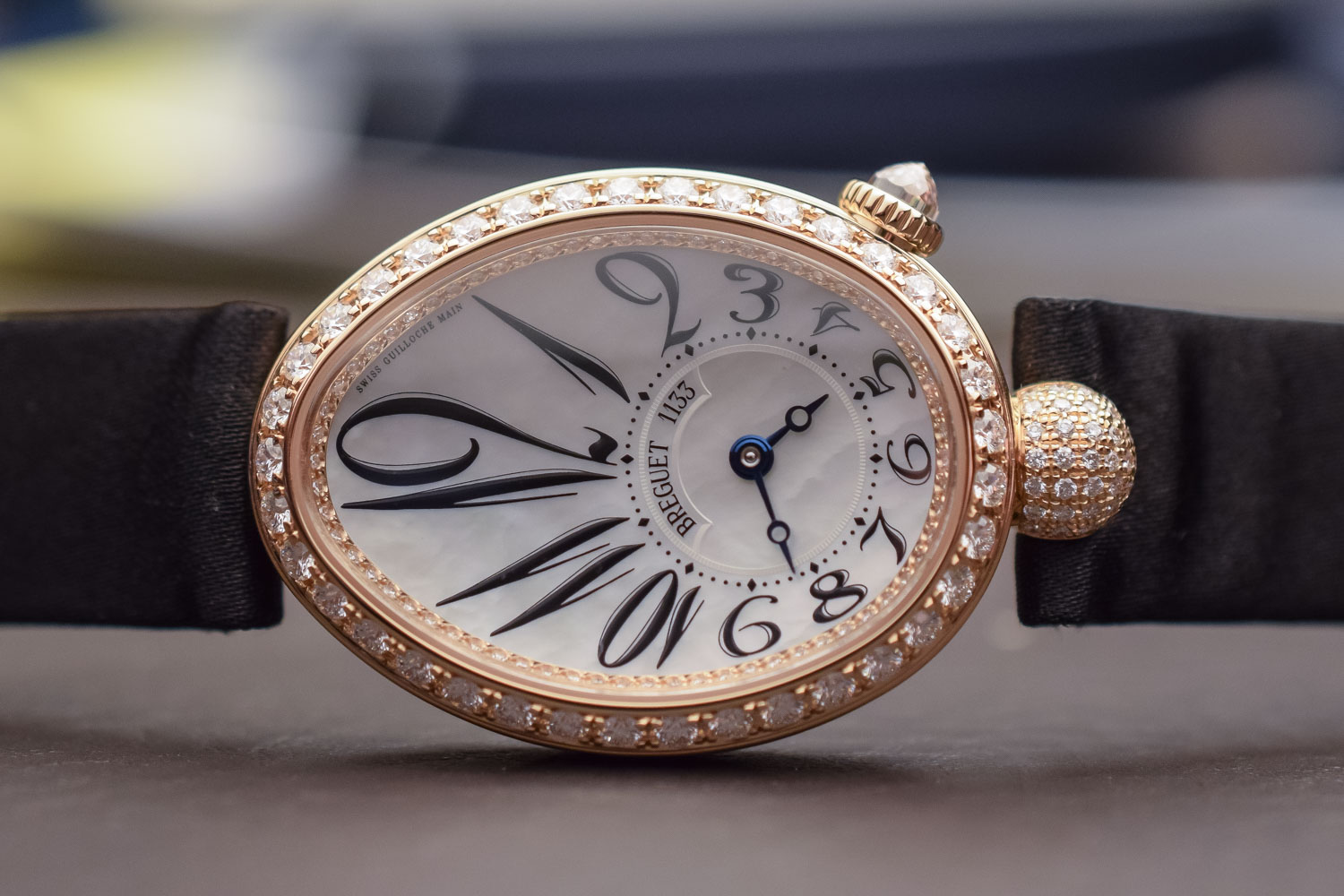
A replica of the first wristwatch
(photo credits to monochromewatches.com)
Despite the fact that arm watches were actually created in the 1570s, they were not worn on the wrist and weren't particularly popular with the public until this updated 17th century design. Arm watches were more so worn by women on account of the fact that they were prone to damage; men wore pocket watches and the first was created in 1574. Wristwatches changed this dynamic on account of the fact that men in the military advocated for the accessory as it allowed them to keep track of time with ease. Alberto Santos-Dumont, a Brazilian aviator, reached out to his friend Louis Cartier to come up with a style that of watch that would allow him to keep both hands on his controls while still being able to properly time flights. Cartier collaborated with watchmaker Edmond Jaeger to develop the Santos wristwatch, which is one of their brands cornerstone pieces.
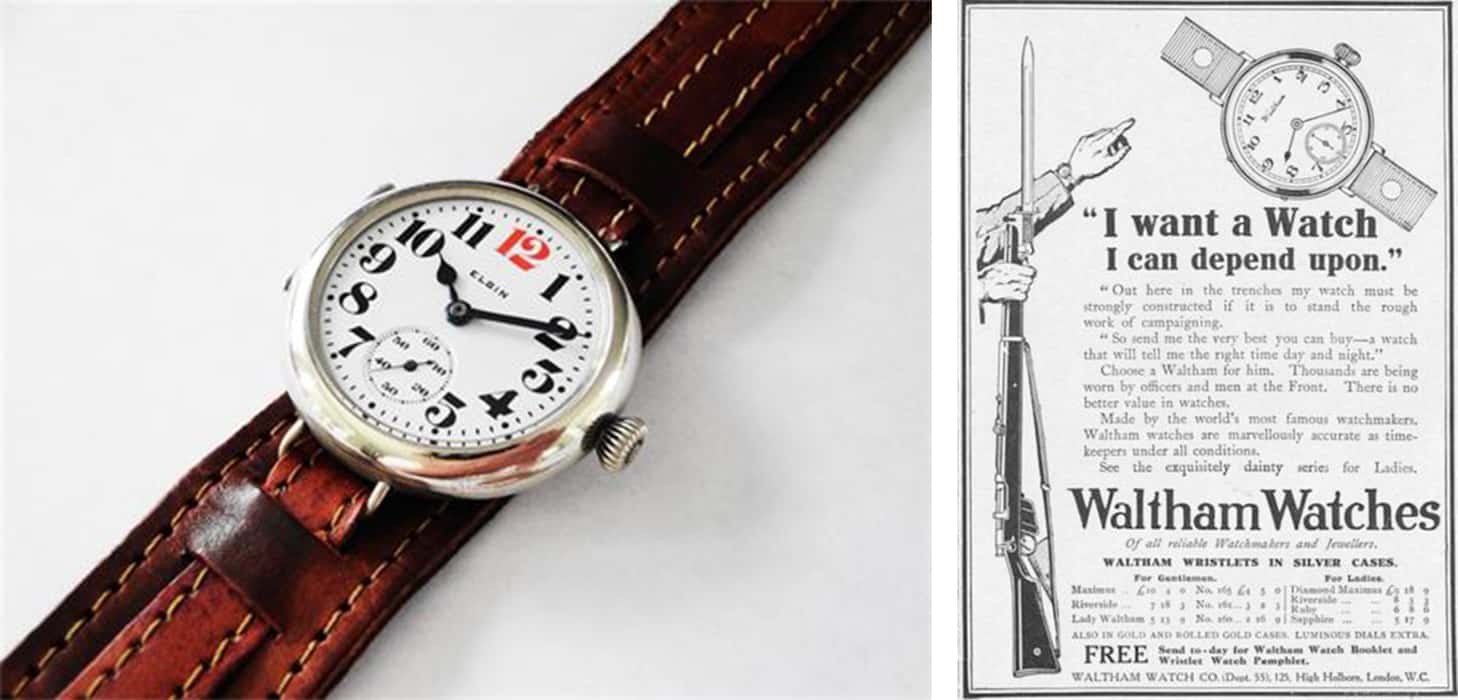
Military watch ad from WWI
(photo credits to wornandwound.com)
As we progressed towards the first World War, the popularization of watches for those in the military grew; the wristwatches they were given were referred to as “trench watches” and they established themselves as part of the Officers Kit for the war front. After this time, this accessory began to truly evolve as industrial advancements allowed for the production of wristwatches with automatic winding. John Harwood, a watch repairer, claimed patents for this ingenuity in 1923 after he was the first who managed to use the kinetic power garnered from the watches' hand movement to changing mechanisms. He then started producing these watches in a factory in Switzerland in 1928, which gave the public a chance to purchase one of his timekeeping pieces that could work for 12 hours on a full charge. In the 1950s, fully electric watches were introduced, with the balance wheel being powered by a solenoid, which is a thin wire trapped around a metallic core that procures electric currents.
This new electric watch allowed for the birth of the quartz watch, which removed all moving parts in mechanical watches; this 1969 invention instead used a battery, allowing them to be more shock absorbent and accurate without constant cleaning or oiling. Quartz watches are still manufactured today, but some luxury Swiss brands choose to create non-quartz options by hand. Today, watches can be made of stainless steel, silver, gold, titanium, carbon fibre, platinum, and aluminum. Some manufacturers even use more high tech silicons and ceramics in experimental design. Aside from regular watches, though, smart watches have made waves in wearable timepieces in the past five years and can be seen on the wrists of millions. Apple, Samsung, and Google have all created their own smart technology, opening the door for other new watches that can be connected to smart devices. Whether you are a fan of the classics or are going all digital, read on to see where your preference falls in the top 5 most iconic watches of all time!
The Cartier Santos
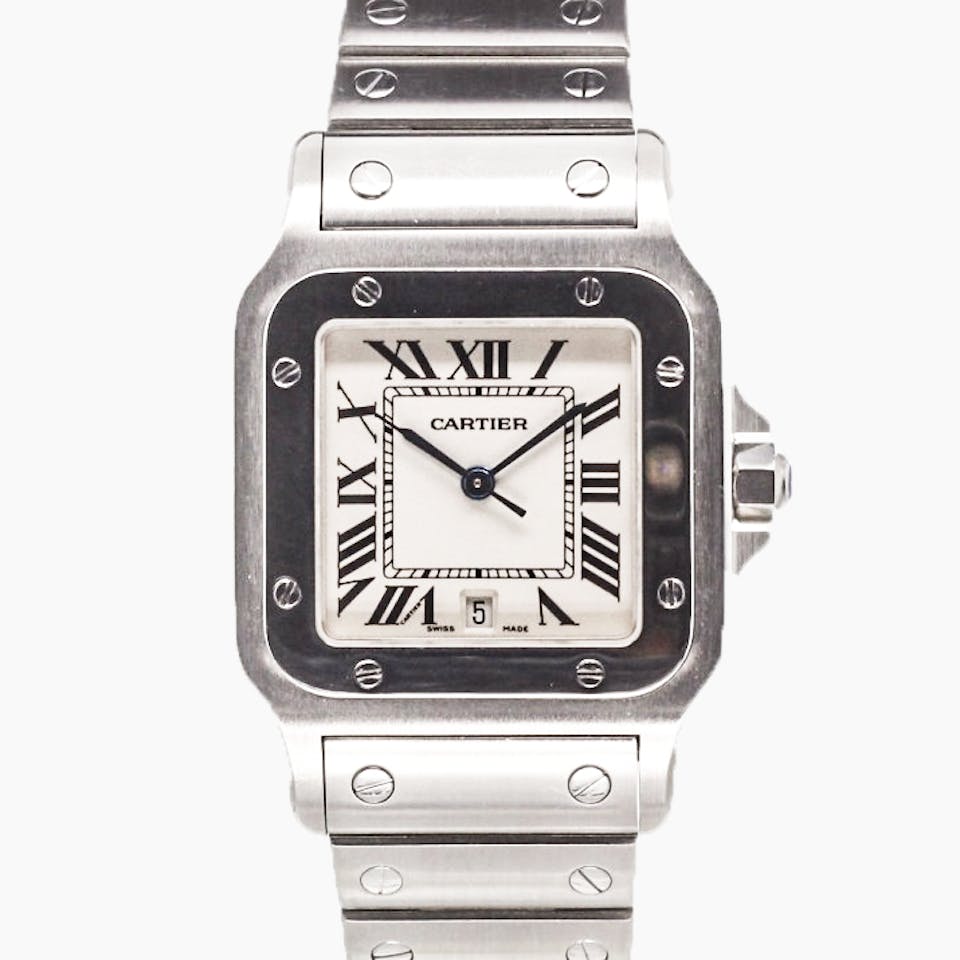
As we learned, this watch was one of the first of its kind and was created to help Alberto Santos keep time while flying his plane. Today, it is an iconic style who’s elegance and history lures in all types of buyers.
Jaeger- LeCoultre Reverso
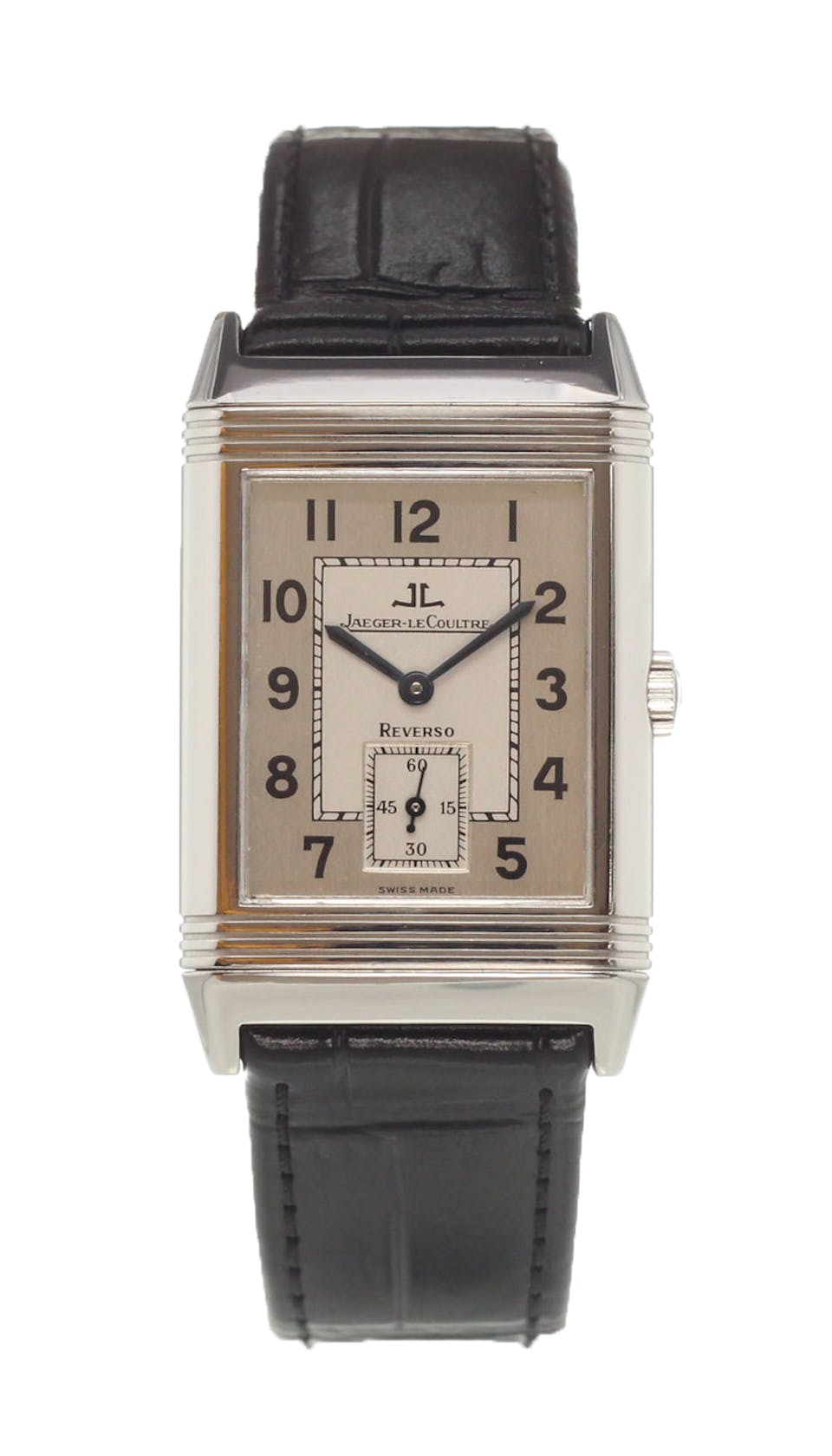
This Art Deco piece made it debut in 1931 as a watch for Britian's elite polo society. It featured a casing that was on a swivel, which ultimately protected the watch from cracks caused by force. Its classic, angular style sets it apart from the rest, appealing to collectors everywhere.
IWC Pilot’s Watch
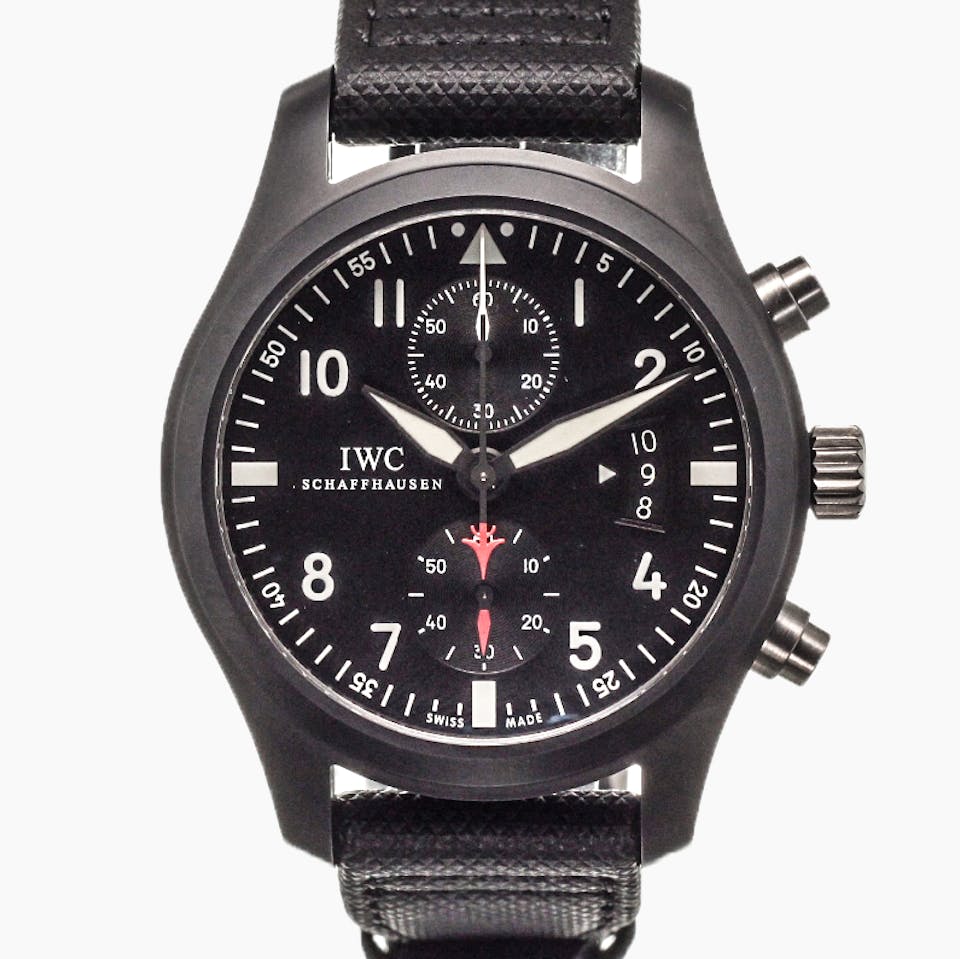
This Special Pilot's watch was the first of its kind at the time of its release by IWC in 1936; it prompted a collection of other military grade watches that captured the praise of the public for decades. This timepieces features a stainless steel waterproof casing that surrounds a softer inner cage, protecting the movement from magnetic fields.
Patek Phillippe Perpetual Calendar Chronograph

This timepiece was one of the first of its kind as it was able to keep track of the date for 200 years without adjustment. Patek released this watch in 1941 and it took the timekeeping community by storm as it was also able to measure small increments of time. Today, it is still widely sought out by collectors and leisure wearers alike.
Rolex Datejust
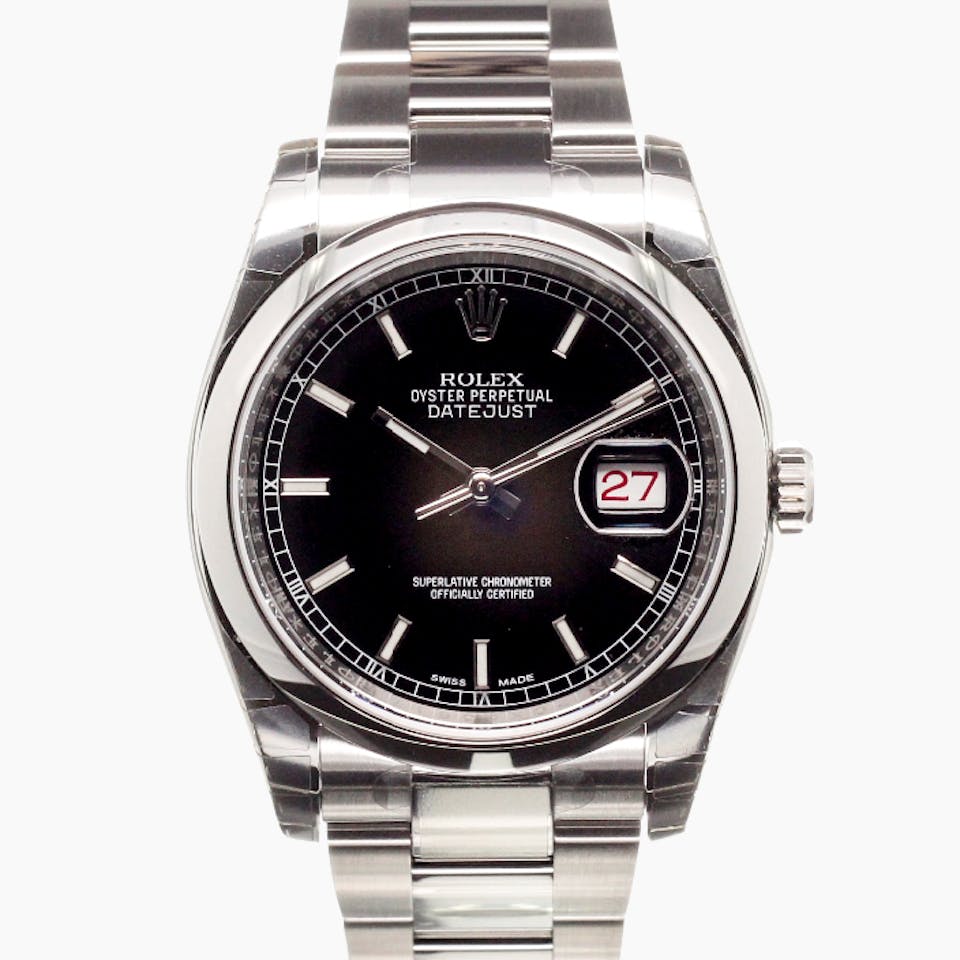
As one of the most iconic watch brands of all time, Rolex released the Datejust in 1945 and it was distinguished by its date indicator. This designs trademark was the Cyclops lense, and its original design has been nearly unchanged. A symbol of strength and intelligence, this timepiece has been worn by the likes of Winston Churchill and Dwight D. Eisenhower.
(all above photo credits to chronext.com)
If you're looking for a way to avoid being fashionably late while still being chic, check out our collection of timekeeping accessories!
-
Designer Spotlight: Sugar Gay Isber
Designer Spotlight: Sugar Gay Isber
By Paige McKirahan
This week, we have decided to spotlight a designer that is not only prominent in our collections, but prominent in jewelry lover's collections over the globe. Gay Isber, affectionately nicknamed Sugar, is a Canadian jewelry designer based out of Austin, Texas. As a seventh generation Texan, she planted her roots in the south with Gay Isber Designs, her namesake jewelry and product design company. As the creative force propelling the business forward, she has been crafting jewelry for over 15 years; she has been featured in national and international media, and has created pieces for everyone from royals to rock stars. She has even been dubbed “a guru of the fashion and jewelry industry” in her home state, which eventually pushed her to receive the Designer of the Year award in 2016. Now that we know of her great successes, let’s learn more about her inspiration, background, and her beautiful creations!

(photo credits to shoplc.com)
Sugar is a self-proclaimed jewelry lover who advocates for conversational pieces that are enjoyed more with every wear. As a creator, she is uninterested in what other designers are producing and focuses more about how her materials inspire her or how she can continue advancing her skills; she feels that she is truly only as good as her last piece.
Gay began her amazing journey by starting off as a painter after graduating with a Master’s Degree in Humanities and Visual Arts. She wanted her paintings to be show stopping, and concluded she would stop art show traffic by creating a bracelet that emulated her artwork’s colorful aesthetic. By the show’s conclusion, she realized that most of the patrons were more interested in her bracelet than her paintings, prompting her to make the transition from art to jewelry. Despite this, she has continued painting as a hobby and many of her jewels look similar to her art.
As a full-time creator, Sugar says that she dreams about jewels and has worked with so many amazing people that make the effort worthwhile. Aside from designing pieces for Michelle Obama, Camilla and Prince Charles, Lady Gaga and Martha Stewart (to name a few), she has also created a line for Harley Davidson and have participated in fundraising events for the company benefiting breast cancer. She participates in a vast amount of charity fundraisers and sells her jewelry at those events, through The Shopping Channel, through her mailing list, and independent retailers. In addition to her career as a designer, she also has been teaching at Austin Community College since 2012 where she offers private or group classes.
Whether it be a custom piece or a simple design, Sugar’s jewelry is eye-catching and commonly features bright colors, beautiful gems, bead work or metallic accents. Looking for some Sugar of your own? We have enough to fill a candy store! Head over to our collection to find some great Gay Isber pieces that are sure to sweeten up this holiday season!
(All biographical information taken from gayisber.com)
-
Sustainable Jewelry: Wooden Accessories
Wooden Jewelry
By Paige McKirahan
As one of the most versatile materials in nature, wood can do everything from create beautiful jewelry to make paper. With the ability to be delicately carved and elegantly painted, it has been trending in the accessory industry for decades. Considering society’s movement towards a more sustainable future, this lightweight, natural material is highly sought after; its economical and eco-friendly designs have established itself as a frontrunner in sustainable product creation. Why, though, should we lean towards wooden creations rather than plastic and other synthetic products?
Of course, like many of wood’s natural counterparts, this material has been used for jewelry for centuries. In more modern times, the use of wood in fashion saw a burst in popularity in the 1930s and this went on until the 1950s. Mixed with plastic, glass and other materials, wood was used to create brooches, hat pins, and pendants. Some pieces were carved and painted and could be made by creatives at home or by jewelry companies. Many depression era manufacturers created wooden pieces that were comical and illustrated the artist’s great creativity. When plastics and other synthetics became popular in the late ‘50s and into the ‘60s, wooden pieces were forgotten as people were enthralled with the new, high tech products created by plastic molds. Despite this drop in circulation, wooden pieces are now attracting green fashion aficionados on account of their natural, sustainable style.
When creating wooden jewelry, the technique is based upon the grain of the wood; you work in the direction of the grain or across it, but never against it as it will crack the piece. To cut wood down to ones desired size, a gouge blade is uses to chip away the wood safely. Wood can enhance the beauty of a variety of other jewelry materials, included gemstones, bone, ivory, beads, and glass. Combining it with other organic materials can create unique designs that are typically carved by hand. Looking for a unique, environmentally conscious piece? Check out our selection of wooden accessories to get that natural feel without stepping a foot into the forest!
-
Floral Patterns Bloom in Fashion
Floral Patterns Bloom in Fashion
By Paige McKirahan
From Dia de los Muertos style to spring classics, florals have always been one of fashion's most beloved patterns. In jewelry and clothing alike, this natural motif can be traced back hundreds of years; of course, they were present in many ancient cultures dating back to the 12th century, but we saw the true culmination of this aesthetic in the 19th century. At this time, textile production saw a huge increase on account of the Industrial Revolution. This paired with the newfound “floral language” boosted botanic influence tenfold and echoed romantic themes from the past. This "language" essentially used specific flowers and arrangements to send messages that could not be spoken aloud in Victorian times. Victorian age society saw its peoples begin to carry floral dictionaries and exchanged “talking bouquets” that could be worn as fashion accessories.
Later in this century, we saw Impressionists and Art Nouveau enthusiasts alike take interest in East Asian art styles that featured exotic floral patterns. They can be credited with starting a trend surrounding Orientalism that spanned until World War II. This 20th century interest was transformative; floral motifs became popular in the accessory world and we saw a burst in the use of florals as a whole. Tropical aesthetics seen in the ‘50s and ‘80s along with hippie style in the ‘60s and ‘70s were huge trends and true indicators of their time.
Presently, flower patterns have established themselves as part of “eternal fashion”: their longstanding popularity has never faltered and there are a wide variety of patterns appealing to all styles. Read on to see five of the most prominent floral patterns in fashion to review for this upcoming spring!
These florals tend to be lively scenes that use shapes, lines, and colors to create abstract patterns.
This floral style was birthed from the Art Nouveau movement that was characterized by its feminine and liberated aesthetic.
Retro florals tend to be in muted tones with a more geometric style. They feature strong bursts of color, and are reminiscent of the fashion in the 1960s.

This style of botanical pattern uses different shapes and colors to create bright designs that hint at floral motifs.

Ditsy motifs include small flowers in an all-over design, creating a simple but fun pattern.
For all of these styles and more, check out our floral collection and let your style bloom!
-
Designer Spotlight of the Week: Missoni
Designer Spotlight of the Week: Missoni
By Paige McKirahan
Considering our discussion of color and patterns in the fashion world this week, it was only appropriate to spotlight one of the most iconic brands of all time that put colorful knitwear front and center. Missoni, which was established in 1953, is now a global label that has established its high profile image by experimenting with stripes, plaids, patchworks, mosaics, zigzags, and wild patterns intertwined with vibrant color combinations. This Italian fashion house was founded by Ottavio Missoni and his wife Rosita; since the brand’s conception, the Missoni family has become famous for their values and closeness. As their brand developed, Rosita became the house’s business manager while Ottavio used his exception eye for color to be the genius behind their color palettes. Since then, it has been run by three generations of Missonis and is now in the hands of the creators’ daughter, Angela, who has made the brand into what it is today. Now that we know about who created Missoni and when, let’s look more into the dynamic history of one of fashion’s most quintessential labels.
When the brand first was created, it began producing tracksuits for the Italian Olympic team as Ottavio was formerly an athletic sprinter. The pair continued manufacturing athletic wear until they took interest in knitting machines. Soon after, they discovered the Raschel machine; after using a technique known as fiammata, or flames, the machine created a knitted fabric with an intricately weaved zigzag pattern. This 1962 discovery birthed their iconic design as they could only create stripes in simple structures prior to the Raschel.

Ottavio Missoni
(photo credits to amara.com)
Their first runway show in 1967 put their unique style on the map and by the 1970s, they were recognized worldwide for their artisanal craftsmanship. They used a variety of materials including wool, cotton, linen, rayon, and silk with over forty colors that made their fun patterns pop. Two of the brand’s biggest fan included Anna Piaggi and Diana Vreeland, and magazines all over the world were pining for Missoni’s hippy-chic designs to grace their pages. The brand began experimenting with chevrons, waves, prints, and scalloping, but their zigzag pattern still held the crown as their most popular style. In 1972, the New York Times even went as far as declaring that Missioni’s knitwear had become an “international status symbol, like Vuitton bags and Gucci shoes”.

1970s Missoni
(photo credit to pinterest.com)
As the ‘70s progressed, Missoni was applying their iconic patterns to everything from accessories to home goods. They officially launched a home label in 1983 and has been ever-expanding since. In addition to accessories and homeware, they have also produced swimwear and fragrances. They have even collaborated with huge brands like Target and Havaianas to make their iconic designs more accessible to a wider market. Buyers were so enthused that their designs could be seen in Target that it crashed the retailer’s website after the release. Missoni aesthetics can be seen out of the home as well as the brand opened a series of themes hotel with their interiors being adorned with colorful zigzags.

Missoni for Target
(photo credit to target.com)
The family run company has Angela at its head, who completely reimaged the company’s image to be sure it reflected her parent’s original values. She has held the position of design director for twenty years and over this time has altered the marketing approach to cater to more urban and youthful clientele. She has done this through a multitude of extensive campaigns, most notably with fashion photographer extraordinaire Mario Testino. Her daughter and brothers are also active in the company; her daughter Margherita serves as her assistant while her brothers, Vittorio and Luca, work in more technical fields of sales and research. The family is careful about partnerships and licensing agreements, but they do have over 20 that extend into women’s wear, men’s wear, children’s fashions, accessories, and home furnishings. They even have made partnerships with automobile manufacturers to create fabrics for car interiors.
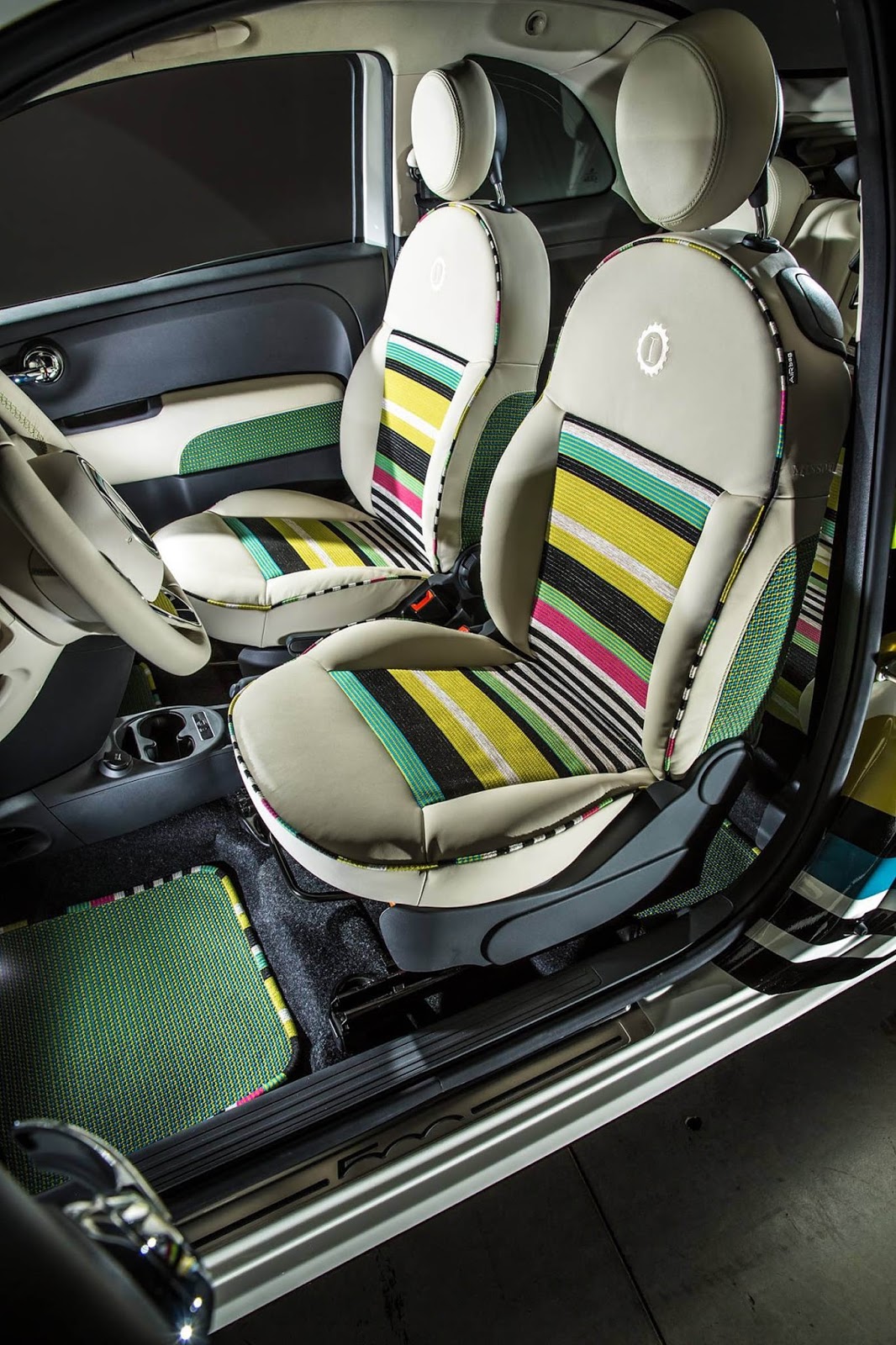
Missoni Fiat Interior
(photo credits to magazineauto.com)
However you like to interact with the Missoni brand, it is evident that throughout its lifespan, the brand has stayed true to their original values. At the forefront of fashion since its conception, the designs themselves have become iconic and occupy every design medium. If you are looking to sport some Missoni flair of your own, head over to our collection and snag some of our favorites!














